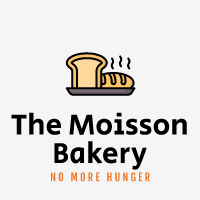Operating a Non-Profit Bakery
Similar to my previous one about how to “design a coffee shop”, here is one about “operating a bakery.” Unlike the previous article, this one contains less technical jargon but more background about the characters.
But regardless, it highlights the challenges of resource management in a large-scale distributed system. If your organization has many resources (i.e., storage, compute, etc.), you must distribute them to various teams and products. How do you make sure that they are distributed fairly and effectively?
In the story today, let’s see how Walter handles these challenges.
A Childhood Dream
Walter Forno was a successful businessman. He worked hard over the years and made a good fortune. At the age of 45, Walter was ready to retire.
Sitting in the backyard, looking over the sunset over the Pacific Ocean one day, he thought he was still young and full of energy, and he wanted to do something more meaningful with the rest of his life.
One thing that he had been hoping to do was to open a bakery. For one thing, he developed a baking habit over the years. He rarely bought bread from the market. Most importantly, he loved the smell of the yeast. He loved watching the cake slowly rise in the oven.
The second reason is more personal. Most people knew Walter as a successful and kind businessman. Some closer friends might know that he used to be a soldier in his 20s. But rarely would people know that he grew up in a poor family in a poor neighborhood. From time to time, he wouldn’t have enough to eat.
The feeling of continuous hunger is not something that you can describe with words. And for years, Walter lived through that. And that was the second reason why he wanted to open a bakery. He wanted to open a bakery back in his hometown, the city of Beaufort West. He wanted no more kids in that little town to experience hunger growing up.
The Beginning
Before it is too late, at age 47, Walter is finally ready. He returns to Beaufort West. He purchased an old hat store that was out of business. That was how the story started. And that was where Walter began his journey in the non-profit bakery. And he decided to call it The Moisson Bakery.

The Opening
He decided to start with baking all by himself. He didn’t hire anyone since he wasn’t sure if anybody would like his bread as much as he did. He also decided not to charge for it for now. Pricing is complicated. Also, his motivation for the bakery was to feed those in need, not to make a fortune.
He opened the door on May 1st, with the first summer breeze. Words got out. People loved The Moisson Bakery. Even though there was only one type of bread he was selling now, the artisan sourdough bread. People kept coming back, and they brought their friends and friends of their friends.
More Cooks In The Kitchen
He soon realized he should hire more cooks, not only to increase production but also to provide more variety of products. After all, he can only do so much by himself.
He hired Matthew, Lei, and Wajiha before the end of the summer.
Each of them specialized in one type of baked goods. For example, Matthew took over the sourdough bread that Walter had been making. Lei brought a recipe for chocolate cake cookies when she joined. Wajiha suggested that she was good at making dark chocolate from raw cocoa. Sure, why not? Walter thought, as long as it was tasty. And Walter asked Lei to use Wajiha’s chocolate in his cookie as opposed to buying it from the market.
As time went by, he hired a few more cooks. But he didn’t name any of them chefs. He wanted everyone to be equal. Keeping a flat hierarchy may help promote ownership and innovation. That’s what Walter kept telling the cooks: whatever recipe you developed, try to keep improving it. Also, if you need an ingredient that some other cook produced in-house, try to use that instead of sourcing from elsewhere. He used Lei’s chocolate cookies and Wajiha’s chocolate as an example.
Under the table, he also sneakily considered himself being the chef. But of course, he kept that thought all to himself.
Bring Your Own Ingredients
Walter’s initial motivation for the bakery was not to make a profit. Well, it still wasn’t. So he didn’t charge people from The Moisson Bakery. Until one day…
The Head of the Education Department of Town, Danny, wanted to improve the school experience for all elementary students. His idea was to provide one free chocolate cake cookie for each student at 3:00 p.m. every Monday.
Danny showed up at The Moisson Bakery this Friday afternoon to share this idea with Walter and ask Walter if it would be possible to prepare the chocolate cake cookies starting next week for an experiment. Walter could not be happier to hear that and agree right away. That was an incredible opportunity to deliver a great impact.
Over the years, Walter had developed a habit of writing a year-in-review every December to reflect his positive impact on society that year. He was so excited about the idea from Danny. He thought that must be a highlight he would have to write down for this year.
After Danny left, he talked to Lei and Wajiha immediately. As excited as Walter, if not more excited, they got to work immediately.
Soon, they realized the biggest challenge. They didn’t have enough butter left in the fridge. What was worse, they emptied the shelves for a couple of nearby stores and still couldn’t have enough.
Walter eventually found a friend of a friend who works at a wholesale supplier and made an emergency butter delivery for them after Sunday afternoon.
The following Monday, they successfully delivered all the cookies that they promised. What a crazy adventure!
Tuesday morning, everyone got together and debriefed on what went wrong last week. The initial meeting was planned for 30 minutes, but it goes way over time to an hour and a half! But it was a fruitful discussion. That’s when The Moisson Bakery developed its first policy:
“If you need to place an order for a big quantity, then you will have to bring your own ingredients.”
This is also known as BYOI years later by historians.
Funding
Before Walter knew it, it was already the end of the year. As an old tradition, in the early morning of Christmas Eve, he sat quietly in his backyard and reflected on what he had achieved over this incredible year.
It had been a busy and fulfilling year. Early this year, when he decided to open a non-profit bakery, he had never anticipated having such a huge success.
He was also surprised by how occupied he had become. During the years when he was still a businessman, he usually ended the year with a lot of notes. But not this year. He was so passionate about this work that he didn’t take any time off. Let alone writing many notes throughout the year. He regretted that a lot.
One of the biggest surprises was accounting. He looked at the savings in all his bank accounts and did some basic math. Over the last months of operation, he had burned through 12.4% of his life savings. Given the current burn and anticipated growth rates, he would go bankrupt in 2.87 years.
 Photo by Hello I’m Nik on Unsplash
Photo by Hello I’m Nik on Unsplash
No way! That would not be acceptable! He intended to open a non-profit organization, but somehow it became a charity.
Funding is needed!
Walter reached out to Danny the following day. They developed a close relationship with the collaboration this year. Walter is wondering whether the government can help fund this non-profit bakery project. He explained to Danny that, without external help, The Moisson Bakery would not be sustainable.
Danny is more than happy to help. The Moisson Bakery had fed so many of the poor in the town and brought so much positive energy into the community.
He proposed the idea of funding the bakery by the government during the town hall meeting the following week. And the proposal gained unbelievably wide support.
Walter has peace of mind. With backing from the government, he knows he can continue operating the bakery until he is too old to walk.
Normalized Flour
The next big challenge was budgeting. How much funding should The Moisson Bakery get? What’s more, how should the budget get further distributed to each individual?
That was not so much a logistic problem anymore. It was more of a human problem.
The Education Department (run by Danny) wanted to continue the happiness program of providing chocolate chip cookies to elementary students once a week. Evidence showed that it substantially increased the happiness of the children, and in return, increased learning efficiency.
In the meantime, organizations like the Small Business Bureau (SBB) also wanted to provide sourdough bread to their union laborers. They were the ones who brought the majority of the tax revenue to the government. And they argue that they should also have a fair share of this.
As suggested by Walter, a separate organization was founded to handle budgeting — the Consumption Evaluation Agency. This way, Walter could focus more on what he does best: logistics around making the best baking goods for the people.
Moving forward, the Consumption Evaluation Agency was the one that would help decide:
- How much budget was needed each year?
- How many raw ingredients to buy for The Moisson Bakery?
- And most importantly, how to distribute these to different organizations?
They met once per quarter, and their goal was to make decisions for the above accurately and fairly.
To continue the spirit of the non-profit from Walter, the Consumption Evaluation Agency decided to avoid using dollar amounts for budgeting. But instead, they invented a new currency — Normalized Flour.
Actually, there is another untold reason. They all hated that Adam kept arguing that they brought in two million tax revenue for the town from SBB. Therefore they were entitled to get up to two million dollars worth of sourdough bread per year for their department.
Using normalized flour was inaccurate since flour is not the only thing that costs money to operate a bakery. But oh well, life is all about tradeoffs, and there wasn’t anything else that was as important as flour in a baking business.
Recipes, Pricing, and Menu
As mentioned earlier, pricing is complicated, especially in a non-profit organization. In regular business, pricing is about maximizing revenue. For The Moisson Bakery, the goal was to break even. They wanted to sell a loaf of bread based on how much it cost to make it, not how much customers were willing to pay. All these need to be in Normalized Flour instead of dollars.
The cost of a loaf of bread is impacted by a lot of factors:
- The raw ingredients (flour, eggs, sugar, yeast, butter, etc.)
- Electricity
- Labor
- Packaging
- Cookwares wear and tear
Of course, raw ingredients were one of the most significant contributors to the cost. But the other factors could not be neglected easily either.
All these made it a full-time job. Walter hired Reilly Clark.
Reilly would talk to each cook and understand their secret ingredients. He organized a big cookbook with all the ingredients listed for each product type. Reilly guesstimated each product’s cost in normalized flour (Nf.).
As all the cooks were constantly improving their cooking process and ingredients, this was a continuous process. The products’ prices were updated often, and Reilly had been on top of them.
Here is a snippet of the menu:
- Sourdough Bread — 510 Nf.
- Chocolate Chip Cookies — 1010 Nf. per box of 6
- Dark Chocolate Bar — 430 Nf. per 100 gram
- White Chocolate Bar — 620 Nf. per 100 gram
- Chiffon Cake — 1220 Nf.
Bookkeeping
Walter also hired one more person during the summer, Remy Ip. He knew Remy for years in his old company, and he was a trustworthy man.
He wanted Remy to help him with bookkeeping. Now that we knew how much each product cost, Walter wanted to ensure that nobody took more than what they were entitled to.
This was what Remy helped with every day. He kept track of how much each customer took every day. If anyone consumed more than they should, they would get kindly turned away by Remy and his two security guards.
In the past, without Remy, it was an honor system. Everyone had an allocated amount, but there was no guarantee that they would respect that. For example, SBB was allocated 150 loaves of bread every day. But it would have been fine if they took 250 one day, and no one would have noticed. Starting with Remy, everything was on paper.
This information that Remy collected was very valuable to the Consumption Evaluation Agency too. They can use them to do more accurate budgeting planning and ingredient ordering.
The End of Year Two
Time flies, and without realizing it, it came to another Christmas Eve. As usual, Walter woke up early in the morning, sitting next to the window staring at the light rain outside, with coffee in one hand. Last year was terrific, but Walter could never have imagined this year would have been even more adventurous.
In a short review, these were what they have achieved at The Moisson Bakery in year two:
- Got funding from the government
- Started a new organization, Consumption Evaluation Agency
- Reilly Clark was hired to manage the cookbook and pricing
- Remy Ip was hired to keep track of consumption
- Left untold in this story, Walter also hired a few more cooks
New Beginning
Walter could not wait for year three to begin. There are still so many unsolved problems, and Walter has many ideas he wants to explore.
There is a problem with waste. Some are requesting too much. Walter knows that some breads are getting molded in some backyards. What kind of policy can we put in place so that we reduce the amount of waste without causing hunger?
The problems could have been much easier if there were an infinite budget and unlimited supply of ingredients. But the world does not operate like that. Resources are finite, and it will continue to be. How do we make sure that we have enough for everybody in need? When there are not enough, how do we decide who to prioritize?
There are also problems due to unplanned events, such as storms and droughts. During those days, people in town would have increased demand. How much buffer should we have to handle unanticipated spikes like these?
These challenges are real and hard. It is so hard because, a lot of the time, it is a human problem, not a math problem. And humans are complicated beings. Sometimes, they can be emotional and unreasonable. Walter is facing an optimization problem of capacity management, with no optimal solution, only trade-offs.
But Walter is more committed than ever. He knows the journey is only 1% finished.
The End
That’s it for Walter’s story today. Thanks for reading!
Do you also have to manage capacity at your organization? Do you also face similar challenges? What are your approaches?




